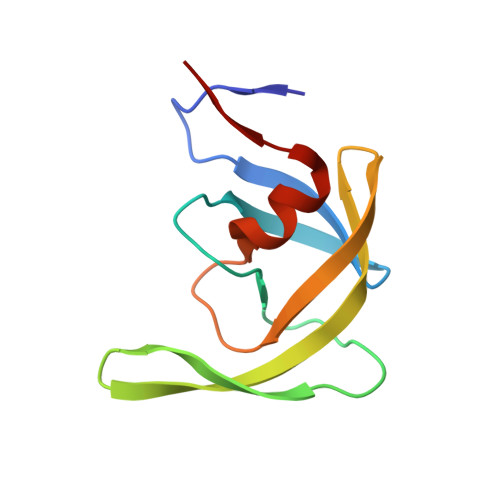HIV-1 protease with 20 mutations exhibits extreme resistance to clinical inhibitors through coordinated structural rearrangements.
Agniswamy, J., Shen, C.H., Aniana, A., Sayer, J.M., Louis, J.M., Weber, I.T.(2012) Biochemistry 51: 2819-2828
- PubMed: 22404139
- DOI: https://doi.org/10.1021/bi2018317
- Primary Citation of Related Structures:
3UCB, 3UF3, 3UFN, 3UHL - PubMed Abstract:
The escape mutant of HIV-1 protease (PR) containing 20 mutations (PR20) undergoes efficient polyprotein processing even in the presence of clinical protease inhibitors (PIs). PR20 shows >3 orders of magnitude decreased affinity for PIs darunavir (DRV) and saquinavir (SQV) relative to PR. Crystal structures of PR20 crystallized with yttrium, substrate analogue p2-NC, DRV, and SQV reveal three distinct conformations of the flexible flaps and diminished interactions with inhibitors through the combination of multiple mutations. PR20 with yttrium at the active site exhibits widely separated flaps lacking the usual intersubunit contacts seen in other inhibitor-free dimers. Mutations of residues 35-37 in the hinge loop eliminate interactions and perturb the flap conformation. Crystals of PR20/p2-NC contain one uninhibited dimer with one very open flap and one closed flap and a second inhibitor-bound dimer in the closed form showing six fewer hydrogen bonds with the substrate analogue relative to wild-type PR. PR20 complexes with PIs exhibit expanded S2/S2' pockets and fewer PI interactions arising from coordinated effects of mutations throughout the structure, in agreement with the strikingly reduced affinity. In particular, insertion of the large aromatic side chains of L10F and L33F alters intersubunit interactions and widens the PI binding site through a network of hydrophobic contacts. The two very open conformations of PR20 as well as the expanded binding site of the inhibitor-bound closed form suggest possible approaches for modifying inhibitors to target extreme drug-resistant HIV.
Organizational Affiliation:
Department of Biology, Molecular Basis of Disease Program, Georgia State University, Atlanta, Georgia 30303, United States.
















